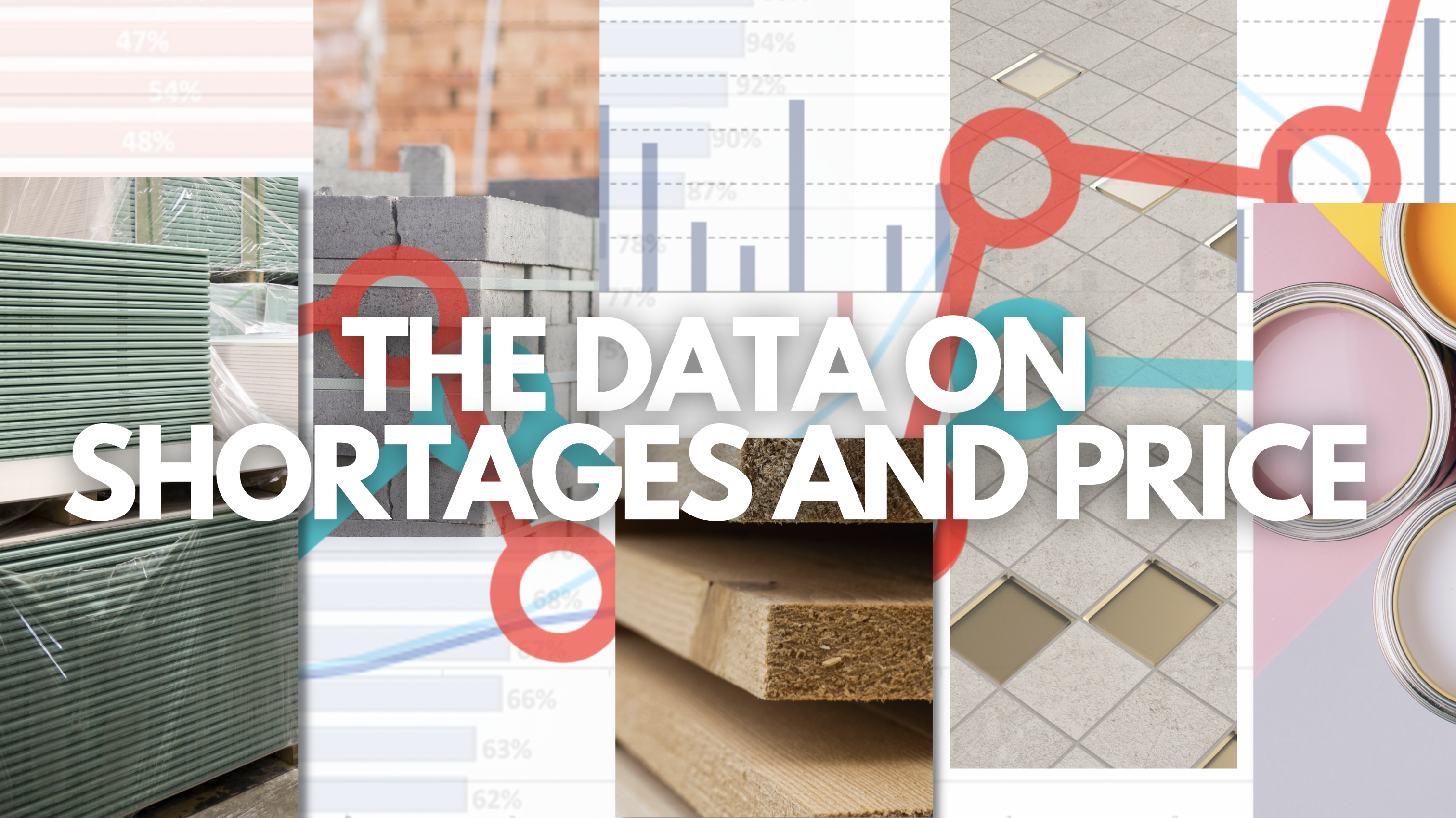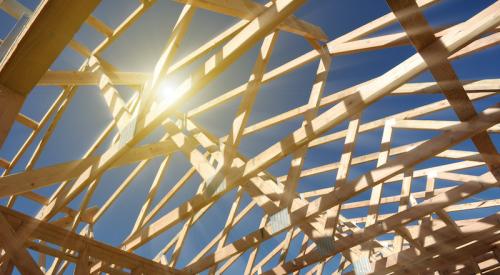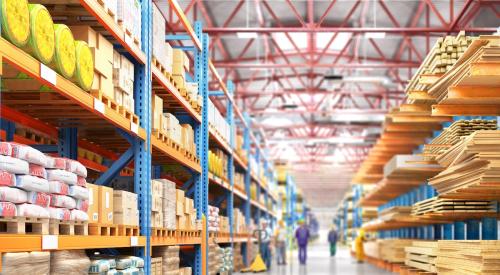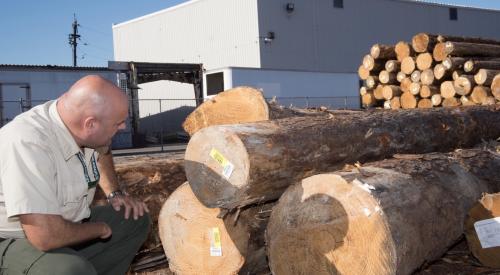The problems surrounding the purchase and procurement of residential building materials and products have escalated and proliferated to such a degree that there is hardly a supply chain left that hasn’t been impacted. As of May, shortages in 21 product categories were impacting more than half of builders—in some cases, the impact was nearly universal.
This is not a normal economic situation and businesses are being effected. An analyst for Wells Fargo & Co. who specializes in the housing described the current state of the building materials market to The Wall Street Journal as an out of control whack-a-mole game where “six of them (are) coming out and you can only whack two at a time.” Shortages have led to price increases and in April of this year, an NAHB analysis linked rising lumber prices alone—which had tripled over the 12-month period prior—to a $35,000 increase in the nation’s average single-family home price.
In his recent testimony to Congress, NAHB Chairman Chuck Fowke explained the “profound” impact of supply chain disruptions on the Association’s 140,000 members. “From record high lumber prices to severe shortages of myriad building materials, the result has been lengthy construction delays or postponed projects and dramatic price increases.”
As with anything so dramatically impacting a business’ balance sheet, understanding the problem is crucial for determining how best to approach it. The industry is lucky in that there are multiple outlets plotting the current chaos, providing data that helps make a bit more sense of the materials mess. However, because combing through data is a task not typically budgeted for in the daily schedules of residential construction professionals, below is a collection of some of the most recent data and its context.
Widespread Shortages and the Varied Impacts on Price
Fundamental to understanding the significance and implications of the shortages is knowing they are truly widespread. Two thirds of builders in May were experiencing shortages in at least 15 product categories. Since January, building materials prices have collectively risen 14.5 percent, more than five times 2020’s rate of increase, according to an NAHB analysis of the Bureau of Labor Statistics’ latest Producer Price Index (PPI).
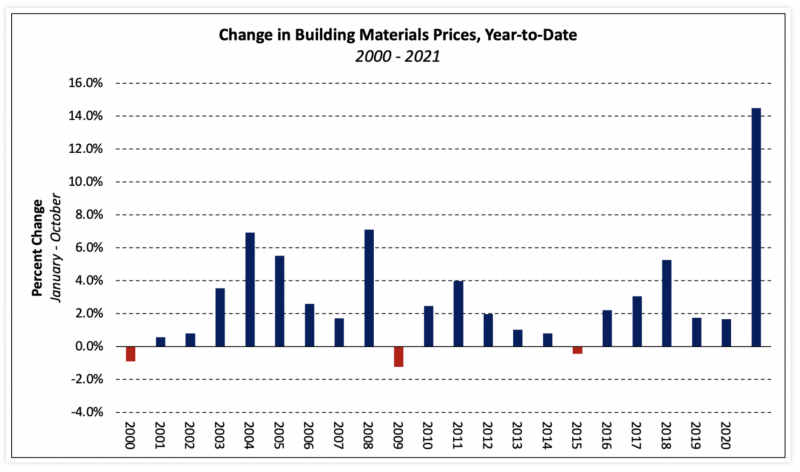
Source: National Association of Home Builders' analysis of Producer Price Index data provided by the U.S. Bureau of Labor Statistics
Still, though widespread, data reveals the severity of problems can vary greatly by category. An NAHB survey conducted in May, for instance, referenced previously, revealed that while appliance shortages were affecting 95 percent of home builders and framing lumber shortages 94 percent, less than half experienced issues obtaining ready-mix concrete, cement, and concrete brick and block.

Source: National Association of Home Builders' analysis of Producer Price Index data provided by the U.S. Bureau of Labor Statistics
Estimating software publisher Xactware, which tracks vendor-level pricing across hundreds of product categories, furthermore revealed in its Q3 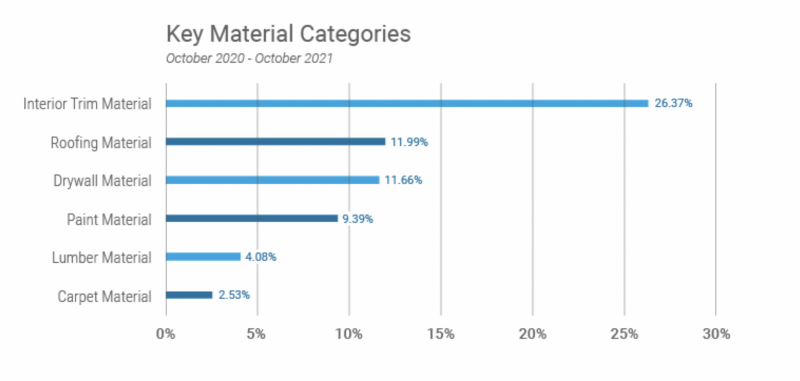 2021 industry trends bulletin how prices during the 12 months prior had increased differently across six “key material categories” (pictured right). There was a 24-percentage point gap between price increases for interior trim and carpet materials, the respective highest and lowest of the six tracked.
2021 industry trends bulletin how prices during the 12 months prior had increased differently across six “key material categories” (pictured right). There was a 24-percentage point gap between price increases for interior trim and carpet materials, the respective highest and lowest of the six tracked.
Price increases variable across product categories were also present in Producer Price Index data, which reflects changes in average product and material prices from the perspective of manufacturers. A review of eight commodity categories relevant to residential construction since January 2020 revealed that while some increases appear the result of recent market conditions, others seem to be continuing pre-pandemic trends. The price of steel mill products, for instance, has risen 109 percent since January 2021—a clear reflection of recent shortages and supply chain disruptions—while ready-mix concrete prices have gone up only 5 percent.
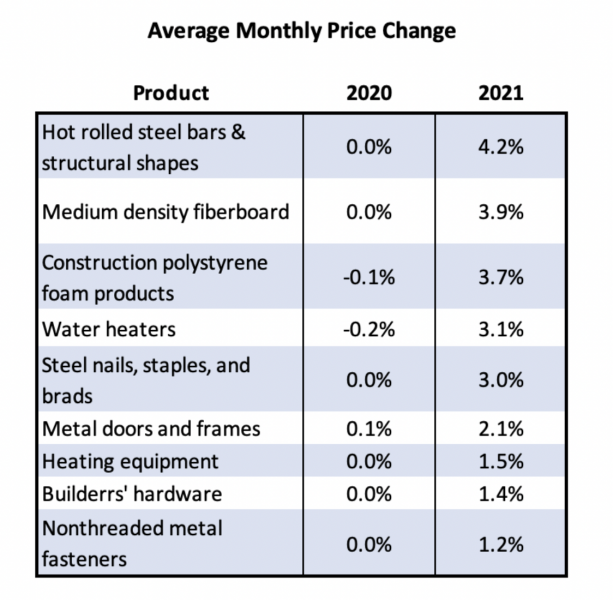
Recent Price Surges
In comparing monthly price increases between 2020 and 2021, NAHB data (pictured right) illustrates how quickly the pace of price increase for certain product categories has picked up in 2021. In some cases, the direction of price reversed completely. As an example, where the price of water heaters last year averaged a 0.2-percent monthly decline, this year (as of September) price is increasing at a monthly rate of just over 3 percent. At that pace, in four months an $800 water heater will cost $900.
NAHB Senior Economist David Logan in a September post identified nine categories in which he’d “seen especially acute increases over the last three months." The most significant increase was to the price of laminated veneer lumber, which rose about 33 percent; however, no category experienced less than a 20-percent increase.
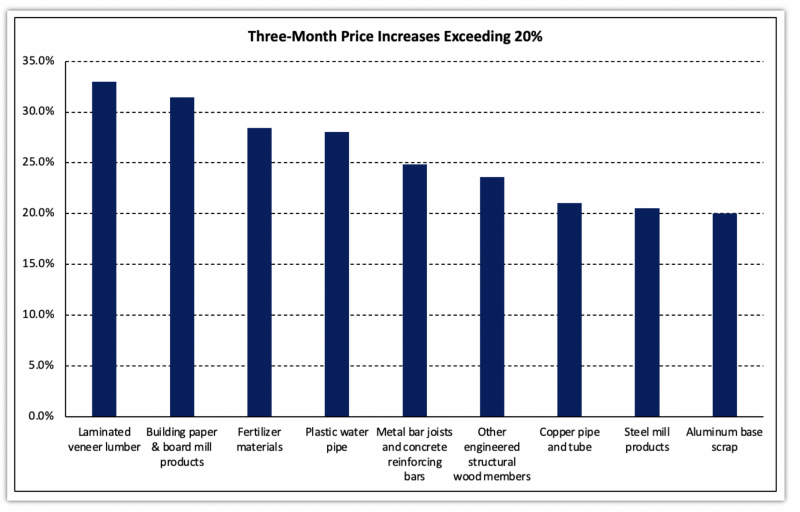
Source: National Association of Home Builders' analysis of Producer Price Index data provided by the U.S. Bureau of Labor Statistics
Lumber Prices Plunge, Though Now Again Are Climbing
One silver lining of 2021, so far as it relates to building materials and products, is the state of softwood lumber, which last year was a dark hallmark of the problems plaguing builders and remodelers—as evident by its reported impact on home price.
Lumber prices began the year climbing, increasing 47 percent between January and May, according to PPI data; and during the same period, the price of lumber futures reached a peak of $1,607 per thousand feet of board, up more than $1,300 from a year prior. But after mid-year increases in sawmill production and more businesses opening up post-quarantine, softwood lumber prices experienced multiple months of steep plummets. Average price for the material was cut in half between May and September of this year.
Additional data published by Xactware in November provides further perspective on lumber prices, showing the particular significance of price increases on sheathing materials.
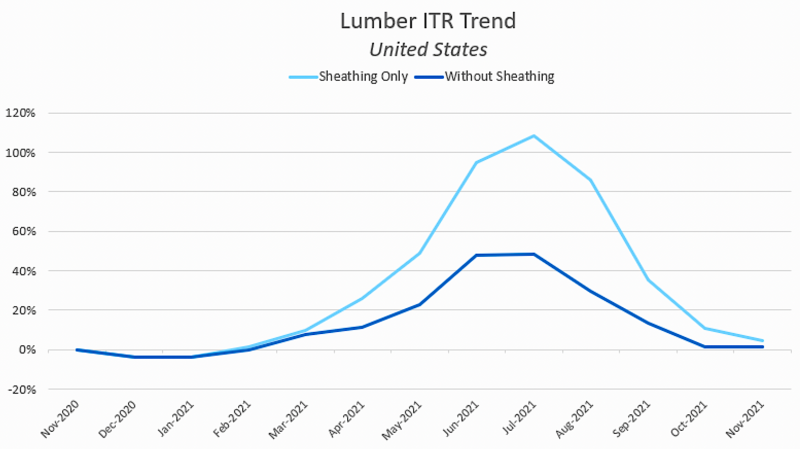
Source: Xactware November 2021 Price List
However, despite the plunge in prices, the cost of lumber now compared to a year ago is still up—nearly 15 percent, according to Xactware's reporting—and may rise further still. It was a concern raised by NAHB Chairman Fowke when he spoke to Congress in October. “Unfortunately, prices began rising again in September and have increased more than forty percent over the past six weeks,” he said. “Furthermore, the futures market suggests prices will climb another 50% by 2022.”
Finding Alternatives
Managing around the current market for building products and materials, and preparing for how things may change (possibly drastically) in the near future, is going to be most difficult for small businesses, which describes the majority of builders and remodelers.
Said Fowke to lawmakers in Washington, DC, “Without large economies of scale, small businesses generally cannot negotiate bulk discounts on lumber and other key building 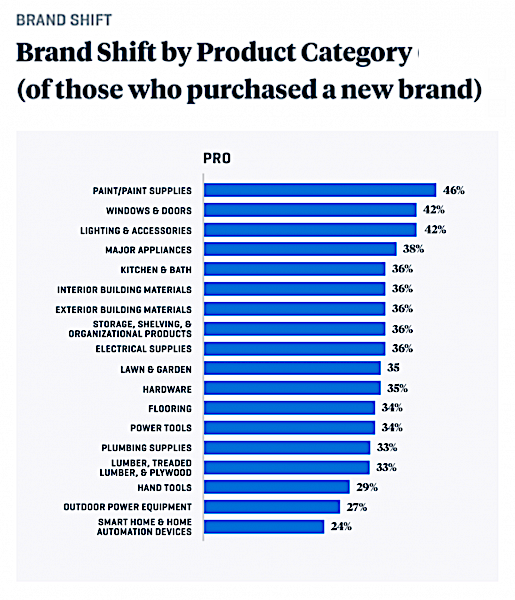 materials. The effects of this uncertainty trickle all the way to the buyer, many of whom have balked at projects at the last minute due to unexpected price increases.”
materials. The effects of this uncertainty trickle all the way to the buyer, many of whom have balked at projects at the last minute due to unexpected price increases.”
While solving shortages and supply chain disruptions will, according to Fowke, require systemic-level problem solving, some residential construction professionals are making small pivots where they can to help ease the pain of rising prices. One such maneuver has been to change brands in a particular product category.
The Farnsworth Group’s recently published “COVID Influence on Building Material’s Research Report” documented the trend in brand shifts and found that a third of of all residential contractors had in the last year changed brands in at least one product category. Ultimately, brand shifts—in which contractors also admitted to "liking" the new brand better—were reported in 18 categories, with the data showing changes to paint, window and door, and lighting brands being most common.
Further included in the report is speculation that the seemingly new willingness to trying a new brand of building product signals a more fundamental shift in at-large buying habits, where details on product availability and a distributor's overall purchase process take priority over brand loyalty. The report reads, "Brands that were once considered mainstays in their categories are no longer safe from brands that are available in the right locations and can be purchased in the ways customers are finding most convenient.”
